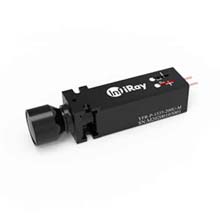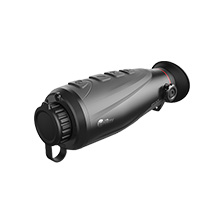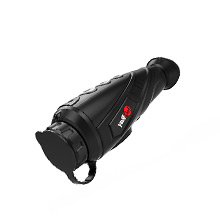6 Points to Do Automotive Full-Body Examination Easier with Thermal Camera

Performing a comprehensive examination of an automobile's body can be a challenging task for automotive technicians. However, with the advent of thermal cameras, this process has become significantly easier and more efficient. We will explore the benefits of utilizing thermal cameras for car inspections, including engine troubleshooting, rear windshield heater wire inspection, car brake pad inspection, body air tightness inspection, car exhaust inspection, and car engine inspection in this article. By highlighting the advantages of thermal cameras in these areas, we hope everyone realizes the widespread use of this technology for automotive repair.
1. Engine Troubleshooting
The engine is the heart of any vehicle, and diagnosing potential issues is vital for maintaining its performance. Thermal cameras provide technicians with a non-invasive method to identify overheating components, leaks, and temperature irregularities in the engine. By capturing the infrared radiation emitted by various engine parts, thermal imaging cameras allow for quick and accurate troubleshooting, resulting in efficient repairs and reduced downtime.

2. Rear Windshield Heater Wire Inspection
The rear windshield heater wire plays a crucial role in defrosting the glass during colder months. However, detecting damaged or malfunctioning wires can be a cumbersome process. Thermal cameras enable technicians to identify any breaks or disruptions in the heater wire circuitry by detecting temperature variations. This ensures prompt repairs, leading to improved visibility and safer driving conditions.

3. Car Brake Pad Inspection
Brake pad wear is a common concern for vehicle owners, as it directly affects the car's braking performance and safety. Traditional inspection methods involve disassembling the braking system, which can be time-consuming. Thermal imaging cameras provide a non-intrusive solution by detecting temperature differentials in the braking system. By identifying hotter or cooler spots on the brake pads, technicians can determine the level of wear and replace them accordingly, enhancing overall safety.
4. Body Air Tightness Inspection
Maintaining proper air tightness in a vehicle is crucial for various reasons, such as passenger comfort, energy efficiency, and noise reduction. Thermal cameras can be employed to identify air leaks in the car's body by detecting temperature variations caused by air infiltration. This allows technicians to locate and seal any gaps or cracks, leading to improved insulation, reduced energy consumption, and enhanced passenger comfort.

5. Car Exhaust Inspection
A faulty exhaust system can negatively impact a vehicle's performance, fuel efficiency, and environmental compliance. Thermal cameras enable technicians to identify potential issues in the exhaust system, such as leaks or blockages, by detecting abnormal temperature patterns. By quickly pinpointing these problems, repairs can be made promptly, ensuring optimal engine performance and reducing harmful emissions.

6. Car Heated Seat Inspection
By capturing thermal images of the seating surface, these cameras can identify any malfunctioning heating elements or uneven heat distribution. This allows technicians to quickly diagnose and rectify issues with the heated seats, ensuring optimal comfort for vehicle occupants during cold weather conditions.

The benefits of thermal cameras in automotive repair are undeniable. By improving efficiency, accuracy, and safety, these devices are revolutionizing the way technicians inspect and diagnose vehicle issues. Their non-intrusive nature and ability to detect temperature variations make them indispensable tools for identifying hidden problems and preventing potential breakdowns. As the automotive industry continues to evolve, embracing thermal imaging technology will undoubtedly become standard practice, leading to enhanced customer satisfaction and improved overall vehicle performance. By leveraging the power of thermal imaging, automotive technicians can save time, improve accuracy, and deliver more effective repairs. It is time for the industry to recognize the immense value of thermal cameras in automotive repair.

















